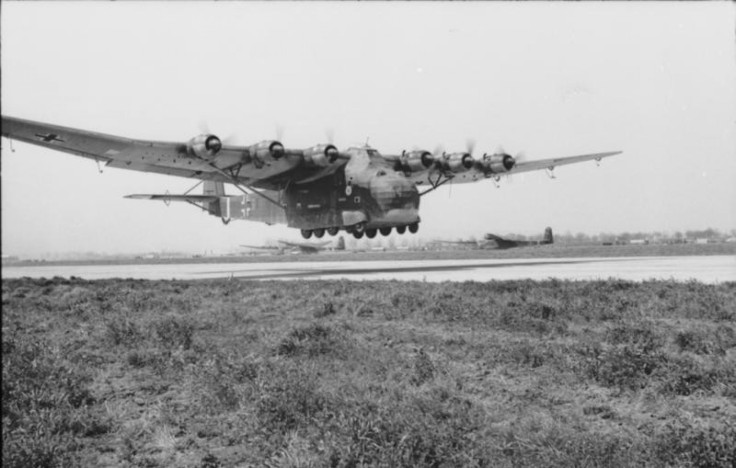Italian Team Finds Wreck Of Giant German Airplane From WW II Off Sardinian Coast

A team of Italian researchers have found the wreckage of a huge German Luftwaffe aircraft from World War II off the coast of Sardinia.
The vessel is believed to be the last surviving Messerschmitt-323 Gigant craft, the largest land-based transport aircraft from the war.
The German transport plane, which was designed to carry tanks and artillery, was apparently shot down by a British fighter jet, reports the Daily Telegraph newspaper, on July 26, 1943, during a flight from a Nazi base in Sardinia on its way to Pistoia in the Italian mainland.
The Me-323 crashed in the water near Maddalena Island.
Originally intended for a campaign to invade Britain, as part of Operation Sea Lion, the plane instead was diverted to duty in the Mediterranean and North Africa.
"It was a pure emotional charge to suddenly see the aircraft in the veiled blue of the sea," Cristina Freghieri, an Italian diver who led the crew that found the wreckage 200 feet below the surface of the sea, told the ANSA news agency. "First, we saw a piece of sheet metal, then another until the plane appeared in all its beauty. My heart skipped a beat.
"Until now, no Me-323 had survived from the war, which makes this discovery of great historical importance,” she added.
The Me-323 model weighed 45 tons, featured a wingspan of 180 feet and could reach a maximum speed of 177 miles per hour.
Only about 200 of the giant planes were manufactured prior to April 1944, when production ceased.
"The Me-323 can carry 120 fully equipped men, or an alternative load of small tanks or motor vehicles, when the upper deck is detached," a U.S. intelligence report on the airplane from March 1943 stated. "Freight is loaded through the double doors that form the curved nose of the airplane; this is accomplished by a jacking system enabling the nose to be lowered to a convenient height.
“The aircraft is fitted with six machine guns, which fire through apertures in the sides of the fuselage, a plywood frame being provided for each aperture," the report added. "Fore and aft armament has not as yet been reported.”
"It was just by chance that we found it, because we were actually looking for a different plane wreck," Aldo Ferrucci, a diving instructor and photographer who took pictures of the wreck, told the Telegraph. "We had understood that the Me-323 was in a totally different location, so we were lucky to stumble on it. It is in good condition -- it is almost intact, with the six engines still all in line.”
Only three months ago, Italian researchers discovered another remnant of World War II off the Sardinian coast -- the wreck of the Roma, an Italian navy battleship, which was sunk by the Germans in September 1943, just after Italy joined the Allies.
Almost 1,400 died in that incident.
© Copyright IBTimes 2024. All rights reserved.





















